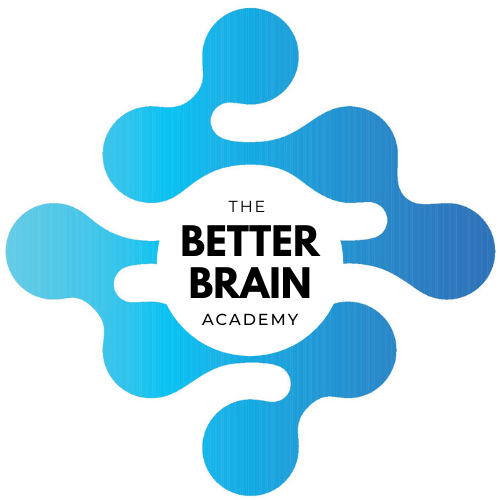Mindset and Practices of Successful Leaders
By The Better Brain Academy

If I told you that you could apply neuroscience to business by optimizing an organ would you be interested in making a change? The benefits could result in an increase to your bottom line, a better corporate environment, and a more productive workforce. If you don’t immediately want to jump on this idea, it’s time to re-evaluate your idea of success.
Improving your brain health and the brain health of your employees can have drastic consequences. It just takes the right tools and guidance. Optimized thinking requires a healthy brain, something most of us actually don’t have.
We’ve all heard that a healthy brain requires hydration, sleep, nourishment, and exercise, but there’s more beyond that to maintain optimization. If you want to improve resilience and performance, we recommend that leaders work on the following:
Neuroplasticity
Your past experiences have shaped and moulded your brain to favour certain behaviours and habits. But unfortunately, those habits may not be optimal. By focusing attention on new practices, including desirable behaviours, leaders can redirect their brains’ chemical, hormonal, and physical resources to create new pathways. The old ones, in the meantime, will wither and fade from lack of use.
If you want to optimize your brain it starts with learning, particularly an attention-heavy subject like a language or musical instrument. This is the best way to enhance plasticity. You will be forcing your brain to pay attention and work at something it hasn’t experienced before. This will make your brain more flexible, which can help things like being able to regulate your emotions, solve complex problems, and think more creatively.
Brain Agility
If you want to be nimble, you must think nimbly. Brain agility is the ability to switch seamlessly among different ways of thinking; from logical to intuitive to creative. Agility is extremely important to leaders and entrepreneurs as they are tasked with diverse situations regularly. If your brain is agile, it will be able to absorb diverse ideas quickly, spot trends, pivot, and ultimately be ahead of the curve.
It’s proven that multitaskers who try to use several modes of thinking at once generally do less well at all of them. It’s recommended that you work on problems consecutively, looking at them from different angles. Leaders can also use this to leverage different thinking styles within their teams.
Mindset
Leaders with fixed mindsets believe traits like talent and intelligence are settled. Leaders with growth mindsets see themselves as works in progress who continuously develop their intelligence and talent through hard work. A fixed mindset leads to stagnation, while a growth mindset leads to innovation and progress.
If you are a leader with a fixed mindset, you should implement neuroplasticity to help move towards growth. For entrepreneurs, this should be fairly easy as you already have an appetite for risk and an attitude toward failure. Change is something that entrepreneurs are attracted to.
Simplicity
We need to realize that limited brains make it impossible to keep up with our hyperactive world and the demands can be overwhelming. Stress, decision making, and life, in general, can easily overwhelm a brain that is not optimized. Luckily, there are some very simple techniques that can help reduce stress. Practising mindfulness is extremely important for leaders and entrepreneurs. Focusing on your body, breathing, and thoughts can quickly reduce stress hormones and multiply folds in the part of the brain associated with executive function.
Leaders who have learned to improve their brain function can then easily apply those lessons to their companies. For example, by creating a cross-functional work program to help employees, employers can help their staff develop brain flexibility as they master unfamiliar knowledge and skills.
They can also use their understanding of the brain to drive fear and stress out of the workplace and to develop trust. When stress occurs it spikes cortisol in the brain, which in turn negatively affects thinking and the ability to control emotions. When these are at sustained levels, people go into survival mode.
By contrast, if you provide an exciting environment where you have the hormone oxytocin flowing, employees are more likely to make decisions that are not based on survival. As a result, innovation and risk-taking flourishes.
If you found this article useful but need help implementing these ideas into your business we can help. At Headways Performance Group we offer Learning Labs which are designed to teach invaluable strategies to increase focus, energy, presence, and engagement.
Visit our website to learn more about how we can help you and your business flourish and staff optimize their brains https://www.headwaysgroup.com/learninglab.
Share
Tweet
Share
Mail
Copyright 2023
All Rights Reserved
The Better Brain Academy
The Better Brain Academy
Kelowna, BC Canada
250-575-7741
THE FINE PRINT
While there may be information on The Better Brain Academy website relating to certain conditions, should a medical condition exist, promptly see your own physician or health provider. The Better Brain Academy does not offer medical diagnosis. Information presented is for educational purposes only and is not intended to provide or replace medical advice. The Better Brain Academy makes no claims that it can cure any conditions, including any conditions referenced on its website or in print materials, including ADHD, anxiety, depression, traumatic brain injury, post-traumatic stress disorder, stress, sleep disorders, Alzheimer’s and dementia. If you take prescription medications for any of these conditions, you should consult with your physician before discontinuing use of such medications.
